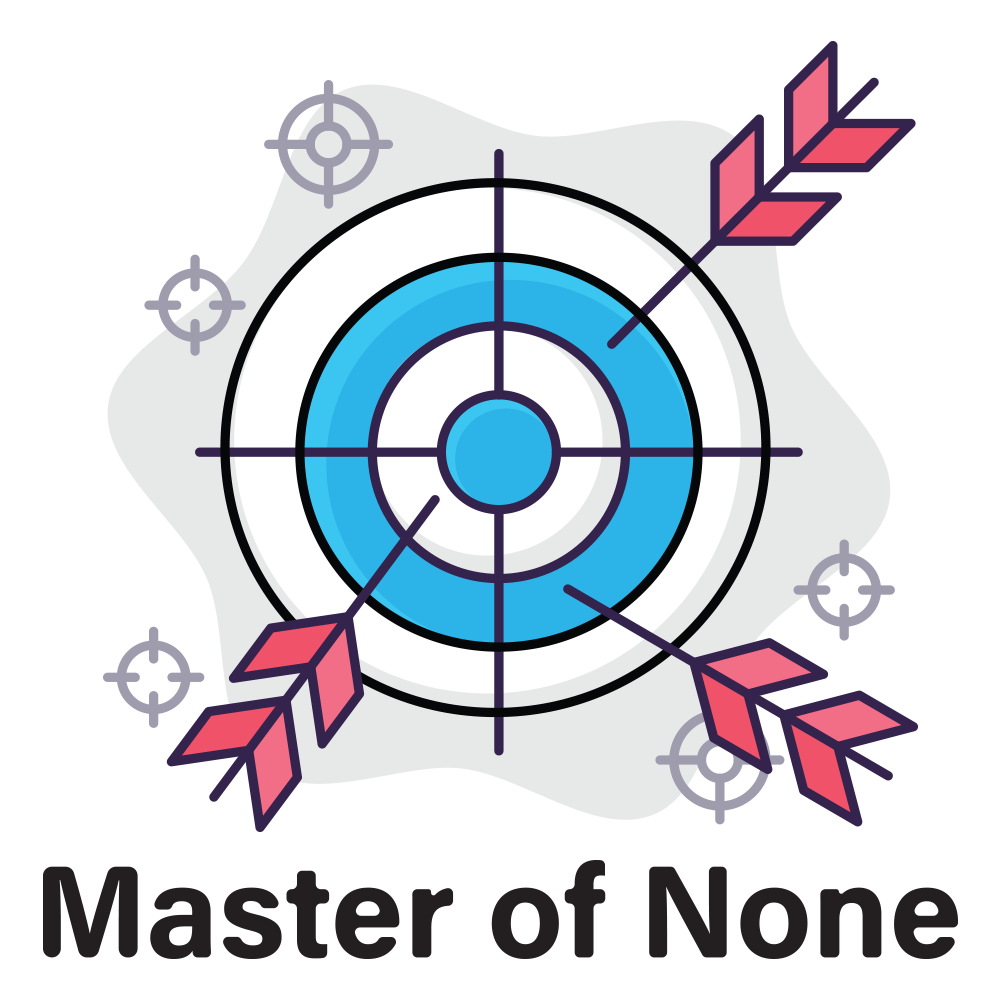Perfect doesn't exist. "Good enough to move forward" does. Launch fast, learn faster.
ADHD and analysis paralysis often go hand in hand. Just last week, I spent far more time than I'd like to admit trying to add one extra variable to my Helium 10 keyword grading algorithm. "If I can just integrate one more data point, I'll get the perfect tiered list of opportunity keywords," I thought. Was I falling for the sunk cost fallacy? Because I was definitely deep in it.
I already had a perfectly good list of keywords that met my needs. So why did I feel compelled to keep tinkering?
Falling down these rabbit holes is something I constantly struggle with, but it's actually a good problem to have. My brain naturally tries to solve problems beyond my current step. While this forward-thinking tendency is valuable, it needs clear boundaries.
“Do what you can, with what you have, where you are.” – Teddy Roosevelt
As marketers, we're at the mercy of search algorithms and unpredictable customer behavior. Since we can't see the future, it's smarter to launch campaigns quickly, gather real feedback, and adjust—instead of getting stuck trying to predict every possible outcome before taking action.
Let's explore how marketers can avoid over-optimization and focus on execution.
The "Good Enough" Decision Framework
Over-optimization kills productivity. Here's how to know when to stop tweaking and start launching.
1. Define "Good Enough"
When defining what constitutes "good enough," it's important to focus on these key questions:
- What's the minimum viable version?
- Will it be effective, even if imperfect?
- What's the worst that could happen?
Defining "good enough" is a crucial first step in avoiding over-optimization and maintaining forward momentum in marketing projects. The concept centers around establishing a baseline that meets essential requirements while acknowledging that perfection isn't necessary for effectiveness. This approach is particularly valuable in marketing, where waiting for perfection can mean missing opportunities, as we operate in an environment of changing algorithms and unpredictable customer behaviors.
This framework helps ensure that projects move forward efficiently while maintaining necessary quality standards.
2. Spot the Tinkering Trap
When we're deep in a project, it's easy to fall into what I call the "tinkering trap" - that endless cycle of making small adjustments that don't significantly impact the final result. This is especially common in marketing, where there's always one more metric to analyze or one more element to tweak. The key to avoiding this trap is learning to recognize when you're making meaningful improvements versus just spinning your wheels.
To help identify if you're caught in the tinkering trap, there are three critical questions you should ask yourself regularly during your work process:
- Are changes meaningful or just busy work?
- Is this a 1% improvement or crucial fix?
- What else could I do with this time?
3. Set Clear Limits
Choose either:
- Time limit: "30 minutes max"
- Iteration limit: "Two more changes"
Setting clear limits is a crucial strategy for avoiding endless optimization and maintaining project momentum. Let me expand on the two main approaches mentioned in the selection:
Time Limit: "30 minutes max"
Setting a strict time boundary helps prevent scope creep and forces focused work. When you know you only have 30 minutes, you're more likely to prioritize the most important improvements rather than getting lost in minor details. This approach is particularly effective for tasks that could potentially expand indefinitely, like tweaking copy or adjusting design elements.
Iteration Limit: "Two more changes"
By limiting the number of iterations, you create a clear endpoint for your optimization efforts. This approach helps prevent the endless cycle of small adjustments that often yield diminishing returns. It forces you to be strategic about which changes you implement, ensuring that you focus on the modifications that will have the most significant impact.
4. Future-Test It
Ask yourself these critical questions:
- Will I regret not launching sooner?
- Is this delay worthwhile?
- What would I tell a friend to do?
One of the most effective ways to break free from analysis paralysis is to project yourself into the future and evaluate your current decisions from that perspective. This mental time-travel exercise can provide clarity when you're stuck in the details of the present.
By examining potential future scenarios, you can better understand the real impact of your current hesitation. Often, we'll find that the perceived risks of launching "too early" are far outweighed by the opportunity costs of delayed action.
5. Launch and Learn
The final and perhaps most crucial step in implementing a "good enough" strategy is embracing an iterative approach to improvement. Instead of trying to perfect everything before launch, adopt a mindset that views your initial release as the first step in an ongoing learning process.
The launch and learn approach consists of three key elements:
• Start with a test mindset - Treat your launch as an experiment rather than a final product. This mindset shift removes the pressure of perfection and creates space for learning and improvement.
• Set review checkpoints - Establish specific times to evaluate performance and gather feedback. These predetermined checkpoints prevent constant tinkering while ensuring systematic improvement.
• Let real data guide improvements - Instead of making changes based on assumptions, wait for actual user data and feedback to inform your optimization efforts. This evidence-based approach leads to more meaningful improvements.
Key Takeaway
The pursuit of perfection is an illusion that can paralyze progress. Instead, embrace the concept of "good enough to move forward" - a practical standard that acknowledges room for improvement while maintaining momentum. By launching quickly and iterating based on real-world feedback, you'll achieve better results than endlessly pursuing an unattainable ideal. Remember: the path to excellence is paved with continuous improvement, not initial perfection.

